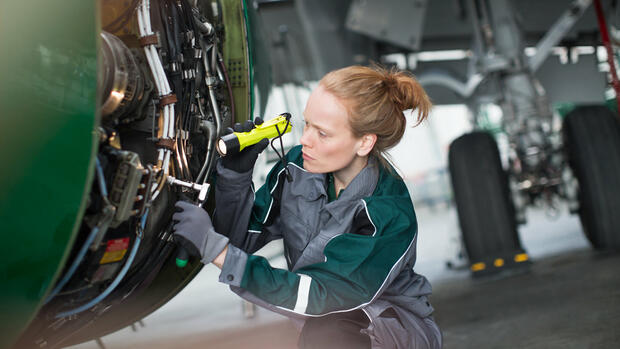Frankfurt The shortage of skilled workers is posing ever greater problems for the aerospace industry. According to the IG Metall coast, up to 5,000 positions are currently vacant – the companies actually wanted to increase their staff after the pandemic. However, skilled workers are more drawn to the automotive industry than to aircraft construction.
A survey by the consulting company H&Z illustrates the difficult situation of many medium-sized companies that manufacture parts and components for Airbus, for example. Of the more than 120 industry executives and professionals surveyed, 90 percent cited staff availability as a top challenge.
“The issue of personnel remains hot,” said Michael Santo, Executive Partner of H&Z, the Handelsblatt. Above all, the increasing permeability between the sectors is causing problems for the suppliers in the aviation industry.
In the past, companies would have looked for employees with ten to 15 years of industry experience. “Today, they look to other industries to see where they can find the right know-how,” says Santo.
In the battle for heads, other employers would do better, according to IG Metall’s “Airconnect” industry information. Audi, VW, BMW, Mercedes, Rheinmetall and Kraus-Maffei Wegmann (KMW) are mentioned.
In addition, the major customer Airbus recruits staff from smaller companies. Because the aviation group also wants to increase its workforce. He is looking for almost 2000 employees in Germany alone.
More money is not enough to attract applicants
“The pull effect of Airbus in the greater Hamburg area is very strong. Working at Airbus makes you proud,” says consultant Santo. Since it is of little use to the suppliers to improve the salary. “We have a real shortage of skilled workers in aviation. Even if I put down money as an employer, I don’t get the people.”
The vacancies at many supplier factories are jeopardizing Airbus plans to increase the monthly production rate of the short- and medium-haul A320 family aircraft to 65 by the end of 2024 and to 75 from 2026. At the end of last year, around 45 jets left the halls. Production can only be expanded if the necessary parts are available.
The aviation group wants to significantly increase the monthly production rate.
(Photo: dpa)
Suppliers also need good staff to prepare for what is probably the greatest challenge in aviation at the moment: the transition to climate-neutral flying. The H&Z survey shows how much the topic is driving companies.
According to this, nine out of ten companies have already taken action with initial projects and measures to protect the climate. “You’re not just waiting for the manufacturers here, the companies are already developing ideas. There’s a new level of realism here,” says Santo.
The focus is on the question of what the successors to the short and medium-haul aircraft, the Boeing 737 and the Airbus 320, will look like. Because it has long been clear that it will take far too long for a hydrogen-powered aircraft to be ready for the market. According to Santo, the suppliers have also recognized that a bridging technology is needed.
The two aircraft manufacturers Airbus and Boeing have been working on solutions for the transitional period for a long time. Among other things, Boeing relies on a so-called high-wing aircraft, in which huge wings are attached to the top of the fuselage and braced against the fuselage with struts.
The US aircraft manufacturer, like its rival Airbus, is considering what a new medium-haul aircraft could look like. Because completely new aircraft with a hydrogen engine still need a lot of time.
(Photo: Boeing)
Airbus, on the other hand, has the “open rotor” in mind. This is a combination of turbofan engines, such as those used in large commercial aircraft, and the turboprop engine, a propeller engine such as that found in smaller regional aircraft.
>> Read also: Boeing and Nasa – This aircraft is intended to make aviation more sustainable
CEO Guillaume Faury hopes to use between 20 and 25 percent less fuel by building huge rotor blades. He told the aviation week magazine this week. The concept is not new, but was discarded in the 1970s because the engines were very noisy. But since then there have been great advances in technology.
The suppliers believe that more is possible here and are therefore also working on this concept. “It’s about the small steps like new materials that make the aircraft even lighter, or propulsion technologies like the open rotor,” says consultant Santo. The circular economy is also on the agenda of the supplier companies, such as the further processing of chips that fall off during milling.
More: Boom at Airbus and Boeing – unprecedented competition for mega orders
